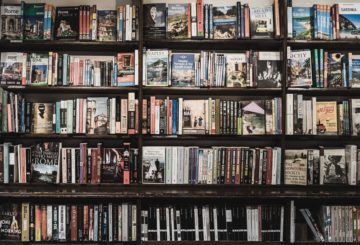'You Want to Keep Them Alive': Beekeeping as a Way of Life

John Kennedy scrapes some white, sticky “bee food” into one end of a small yellow perforated box, his fingers protected by gloves. The queen bee squirms in the marking cage, a freshly painted white dot glimmering on her oblong back. The worker bees will reject this young queen because of her white marking. So, Kennedy must lure them in with the familiar, sweet-smelling mixture of lemon and sugar.
He places the trapped and enraged queen back in the hive. The worker bees swarm around her cage and begin gobbling. By eating the mass of sugar, they slowly unblock the queen’s escape route. After a few hours, she will crawl out of the cavity and into freedom.
Freedom might be an overstatement, however—if the queen bee’s performance slackens, the worker bees will drive her away. Every day, she must lay up to 2,000 eggs. In her lifetime, the average queen bee lays up to 500,000 eggs.
Kennedy holds the three-kilo bee combs with steady hands for a seventy-eight-year-old. He has been a beekeeper for the last twenty-five years. It certainly “keeps him busy” since the loss of his wife. Beekeeping is, Kennedy insists, just a hobby. But perhaps it would be more accurate to say it’s a way of life.
Kennedy’s blue-green eyes, the color of the mountains that surround the village of Ringgenberg, Switzerland, shine from behind his bee net, shadowed by bushy, peppery eyebrows.
He talks about his bees as if they were people. “The women are vicious,” he says with a smile. Now that winter is approaching, they have already killed off the male drones, who eat too much to make the hive sustainable in the cold months.
The buzzing of about 30,000 bees and the sweet smell of wax, beechwood, and nectar contrasts with the corpses of summer bees scattered on the floor, their life cycles complete now that it is late August.
Kennedy’s wife, Ursula, died of multiple myeloma—or bone marrow—cancer at the beginning of the Covid pandemic. Originally, the beehouse belonged to her father. But when he became too frail and none of Ursula’s family wanted to continue the tradition, Kennedy stepped in. That was back in 2000.
Exiting the bee house, Kennedy winds down a path in the woods, the trees rustling overhead. He grabs his Staco motorbike, walks for a bit, then mounts and whizzes up the path to his home—surprisingly agile for a man of his age. In the back of the bike is a small hitch. That way, he can pull a small cart behind him when he needs to transport the bee combs and their frames, each one measuring 28.5 by 34.5 cm.
The path to Kennedy’s home is lined with plum trees, lavender, and grape vines. His living room window overlooks Brienz Lake and behind it, rising in the distance, the Alps in their misty splendor. “I’m spoiled. It’s like a little paradise,” he says. This was Ursula’s childhood home.
Originally from Coolderry village in Ireland, halfway between Dublin and Limerick, Kennedy moved to his wife’s native village a few decades ago. While Ursula is no longer present, Kennedy keeps her memory and her father’s beekeeping tradition alive.
In the lower level of the house, Kennedy extracts honey from a large metal cylinder using a technique called “centrifuge.” When he harvests the honey twice a year, Kennedy arranges the wooden frames of the honeycombs within the cylinder and spins them in a circle. As they spin, the precious liquid drips out. While most beekeepers nowadays use electricity, Kennedy still insists on doing the process by hand.
Holding up a jar with honey the color of yellow topaz, Kennedy explains that the color points to the lime trees where his bees gathered their nectar. This golden liquid is much lighter than the amber honey that comes from further up the mountain, where he owns a second beehouse.
Bees need about 80 percent of the honey they produce to survive, so every drop matters. Last year, Kennedy collected 800 half-kilo glasses of honey, or 400 kilos. But this year’s output has been poor—only 145 kilos due to an excess of rain and lack of sun.
Kennedy sells his honey locally. “I have a consistent customer base,” he explains. After living in a village of only 3,000 people for so many years, there’s no need to advertise. And many of the people who buy his honey were also customers of his father-in-law—they just keep coming back year after year.
What Kennedy doesn’t sell, he gives to loved ones. But beyond his daughters and grandchildren, Kennedy is surrounded by another kind of family: “[The bees] are like children,” he says fondly. “You want to keep them alive."
Kara Barlow is from and attended WJI Europe in 2024.




